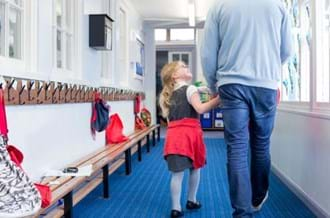One-to-one counselling and school attendance in the UK
One-to-one counselling and school attendance in the UK

Professor Tamsin Ford
Professor of Child and Adolescent Psychiatry at the University of Cambridge - Tamsin is Research Advisor at Place2Be. She is an internationally renowned Child Psychiatric Epidemiologist who researches the organisation, delivery, and effectiveness of services and interventions for children and young people’s mental health.

Dr Jennifer Saxton
Research Associate at the University of Cambridge - Jennifer is a mixed methods researcher, with a particular interest in interventions to improve young people’s mental health and reduce inequalities. Her recent projects include an evaluation of Place2Be's one-to-one counselling intervention, and the HOPE study.

Dr Joanna Anderson
Joanna is a Chartered Psychologist with a background in clinical neuropsychology and clinical psychology. Since completing her PhD in 2004, she has balanced her time between academic research and clinical practice working with children and young people with special educational needs and disabilities.
The University of Cambridge has been working with Place2Be to analyse data from children who were supported with one-to-one counselling. The research aimed to understand whether the intervention was associated with improved school attendance and reduced persistent absence.
Key findings
- School-based one-to-one counselling has the potential to reduce persistent absence, especially for primary school-aged pupils and children of parents/carers with no educational qualifications.
- One-to-one counselling might not improve school attendance among older pupils (aged 15-19 years).
- Completing all planned sessions and agreeing together when to end the counselling may be important for it to work.
- Record high absence levels in UK schools raise concerns for young people’s futures.
Data shows that school absence rates in the UK have reached unprecedented levels. In the spring of 2023, 20.5% of students were persistently absent, missing 10% or more of possible sessions. Alternative provision settings had the highest levels of persistent absence at 81.2%, followed by special schools at 36.3% and state-funded secondary schools at 24.1%. Additionally, nearly 150,000 pupils were severely absent, missing 50% or more sessions.
Missing school has a well-documented, detrimental impact on many outcomes in childhood, adolescence and adulthood 1 2. Poor attendance often results from a complex mix of factors, including the mental health or learning difficulties of the child or parent, family circumstances, and school-related issues such as school climate, behaviour management strategies, and available support 3.
Can psychosocial interventions help reduce school absence?
We know that psychosocial factors significantly affect school attendance, yet there aren't many studies that explore whether psychosocial interventions can improve students’ school attendance.
We conducted a study to see if school-based one-to-one counselling improves attendance and how it works for children and young people from different backgrounds. We used data from 7,405 pupils aged 4-19 from 392 primary and secondary schools in England, Scotland, and Wales. These pupils attended one-to-one counselling sessions with trained Place2Be counsellors. We compared their school attendance before and after the counselling to see if there was any improvement.
Although we didn't find a link between counselling and the percentage of school sessions attended, we did find that it reduced the chances of students being persistently absent. Counselling was most beneficial for younger children (aged 4-9 years), whose attendance improved, and the risk of persistent absence decreased after their sessions. In contrast, older pupils (aged 15-19 years) missed more school and were more likely to be persistently absent after attending counselling compared to before.
Counselling slightly improved attendance for Asian, Asian British, and Chinese students and reduced persistent absence among White British pupils. The biggest decrease in persistent absence was seen in children whose parents or carers have no educational qualifications.
We observed that children classified as 'unlikely to have a disorder' (by the Strengths and Difficulties Questionnaire; SDQ) or those whose status improved after counselling, showed significant improvements in attendance and a reduced risk of persistent absence. Conversely, for pupils identified as 'likely to have a disorder' or whose status worsened, school attendance deteriorated and the risk of persistent absence increased.
Finally, we found that children who showed increased engagement and enjoyment of school also demonstrated greater improvements in school attendance and a reduced risk of persistent absence.
Read our publication titled 'One-to-one counselling and school attendance in the UK'.
What does it mean for practice?
Mental health plays a crucial role in school attendance, and resources should be allocated to enable schools to support the mental health of all children and young people. However, further studies are needed to explain why some children’s attendance outcomes improve following one-to-one counselling, while for others, it may be ineffective or even detrimental.
Poor attendance is a complex issue driven by many factors, each unique to individual pupils. Policies should encourage the development of tailored strategies to address the specific needs of children and families. These strategies might include integrating peer support, mentorship, academic assistance and family engagement programs, with particular focus on addressing specific barriers faced by older students. Additionally, policies should support the collection and analysis of data to inform ongoing improvements and ensure interventions are effectively meeting pupils' needs.
References
1 Ansari A, Hofkens TL, Pianta RC. Absenteeism in the first decade of education forecasts civic engagement and educational and socioeconomic prospects in young adulthood. Journal of Youth and Adolescence. 2020;49:1835-48.
2 Gottfried MA. Chronic Absenteeism in the Classroom Context: Effects on Achievement. Urban Education. 2019;54(1):3-34.
3 Melvin GA, Heyne D, Gray KM, Hastings RP, Totsika V, Tonge BJ, Freeman MM, editors. The Kids and Teens at School (KiTeS) framework: An inclusive bioecological systems approach to understanding school absenteeism and school attendance problems. Frontiers in Education; 2019: Frontiers Media SA.
News & blogs

Launch of good practice guide for schools - supporting displaced families
Place2Be is proud to have collaborated with Save the Children UK in the creation of a good practice guide.
Read more
The £51 billion case for improving children’s mental health
Read the latest PBE report on how preventing mental health decline in children is also an investment in society's future.
Read more
Fostering the power of relationships
Celebrate the power of relationships to transform the lives of children and young people in foster care.
Read more



